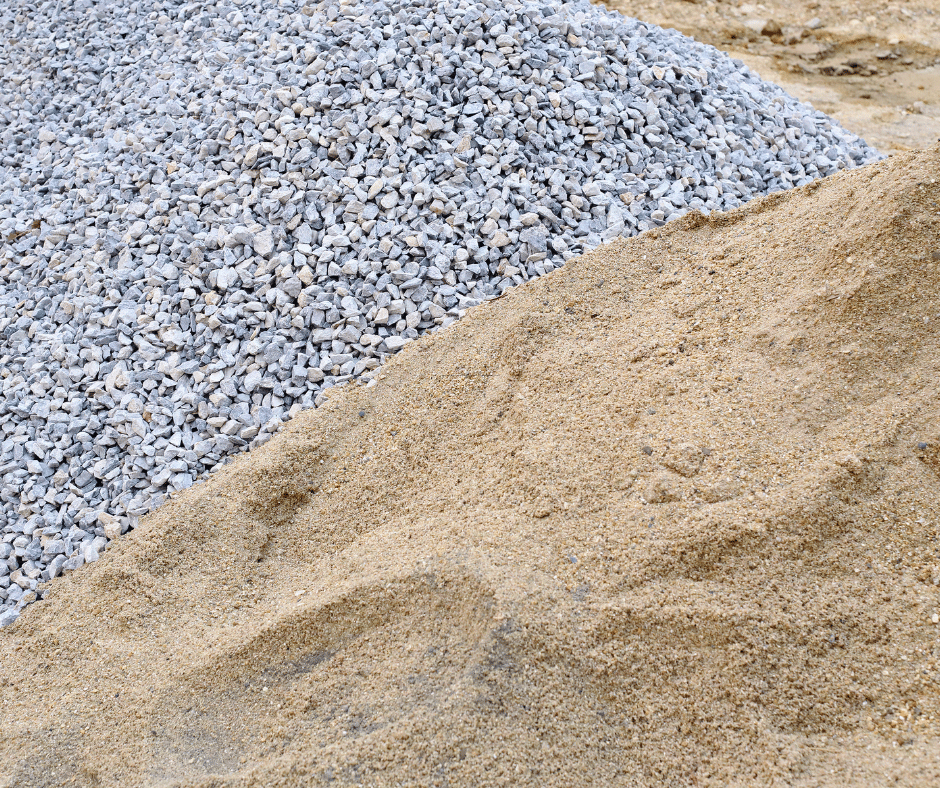Choosing between gravel and sand for a project isn’t just a matter of preference—it’s about what works best for the specific requirements of the job. Both materials have distinct properties that make them suitable for different applications in construction and landscaping. In this guide provided by Orlando Gravel and Sand, we delve into the details of each material to help you make an informed choice. Understanding these materials’ unique characteristics can significantly impact the efficiency and cost-effectiveness of your project. Let’s explore the pros and cons of gravel and sand to determine the ideal choice for your upcoming project needs.
Understanding Gravel and Sand
Due to their distinct physical properties, gravel and sand serve as foundational elements in various construction and landscaping projects. With its coarser texture and larger particle size, gravel is ideal for providing stability and support underfoot. Sand, with its finer granules and ability to compact well, offers a smooth finish and solid bedding for pavers and blocks. Both materials are extracted from the earth and processed in ways that optimize their usability for specific tasks.
Key Properties of Gravel
Gravel’s versatility comes from its varied sizes and compositions, which can be tailored to suit different construction needs. It’s excellent for drainage projects because it allows water to pass through without significant erosion. Gravel’s angular and irregular shapes lock together under pressure, making it a preferred choice for driveways and pathways where stability is crucial. It’s also relatively maintenance-free, resisting shifts and settlements under normal conditions.
Key Properties of Sand
Sand is characterized by its cohesiveness and ability to mold when wet, making it a critical component in concrete and mortar mixtures. Its fine particles fill voids between larger aggregates, creating a dense, firm base that stabilizes structures. Sand is also favored in landscaping as a base for laying pavers due to its ability to level surfaces and prevent shifting. Additionally, it’s used in areas needing high compaction and solidity, such as volleyball courts or playgrounds.
Comparing Costs: Gravel vs. Sand
Cost considerations are essential when choosing between gravel and sand. While both materials are generally economical, the specific costs can vary based on local availability, transportation, and the quantity required for a project. Gravel tends to be more expensive upfront due to mining and processing costs, but its durability may reduce long-term expenses through fewer replacements and less maintenance. Sand might require more frequent replenishment in high-traffic or dynamic weather areas, potentially increasing long-term costs. Analyzing immediate and future financial impacts can help you make a cost-effective decision that aligns with your project’s budget and longevity expectations.
Environmental Considerations
The environmental impact of using gravel and sand must also be considered. Both materials are natural resources, and their extraction can disrupt local ecosystems. However, many suppliers, including Orlando Gravel and Sand, are committed to sustainable practices that minimize negative environmental effects. Using locally sourced gravel and sand can reduce transportation emissions, and choosing recycled materials can further lessen the environmental footprint of your projects.
Project Suitability: When to Use Gravel vs. Sand
Determining whether to use gravel or sand depends on the specific needs of your project. Gravel is best for areas requiring excellent drainage and durability under heavy use, such as driveways or base layers for roads. Sand is ideal for projects that require a smooth base, such as beneath pools, patios, or playground equipment. Consider factors such as the expected load, drainage needs, and desired appearance when choosing between these materials.
Tips for Buying Gravel and Sand
When purchasing gravel or sand, it’s important to choose quality materials that fit the specific needs of your project. Verify the source and quality of the material to ensure it complies with relevant standards and regulations. Consider buying in bulk to reduce costs, especially for large projects. Be sure to account for delivery fees, which can vary depending on the distance from the supplier to your site.
Contact Us for Your Gravel and Sand Needs
Choosing between gravel and sand for your project involves considering a variety of factors, including environmental impact, cost, and the specific needs of your project. Orlando Gravel and Sand is equipped to supply you with both high-quality materials, ensuring that whatever your choice, it’s the best one for your needs. Our experts are ready to provide personalized advice and support, helping you navigate the complexities of material selection. Reach out to us for guidance on which material—gravel or sand—will most effectively meet the demands of your project.
